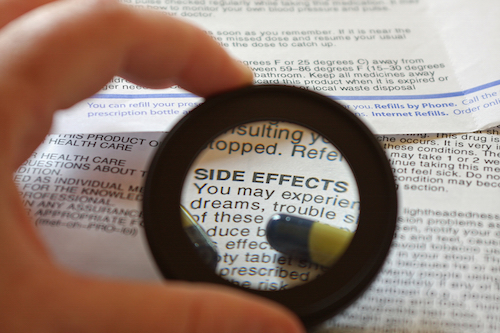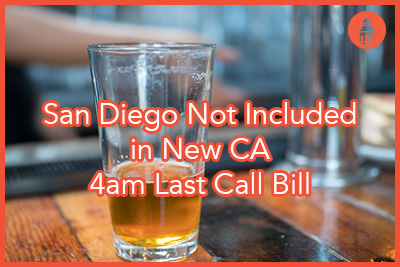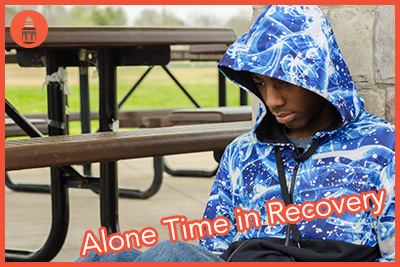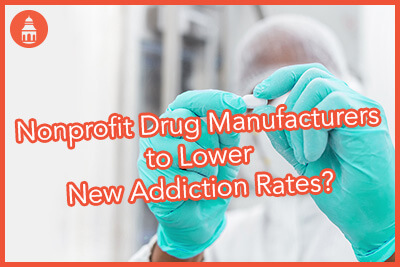
It’s rare that a trip to the doctor is seen as a possible threat to one’s health. Walking out with a prescription usually feels like holding a ticket to healing – not a ticket for early death. While most people who go to the doctor and leave with a prescription for a medication that has the potential for abuse or addiction will be able to find therapeutic benefit to using the pills and few, if any, negative repercussions, some will find themselves living with a prescription drug abuse problem within a few months and an addiction that is life-altering and potentially life-ending inside of a year.
Why does it happen to some and not others? What medications are most dangerous? Here is a brief guide to the medications that can pose the largest threat to patients.
Prescription Painkillers
Oxycodone- and hydrocodone-based drugs like OxyContin, Percocet, and others are very commonly prescribed for the treatment of moderate to severe pain. When used for the treatment of an acute pain issue (e.g., after surgery, accident, or dental procedure), few will develop an issue if they follow the doctor’s dosing orders. However, with long-term use, physical tolerance, or dependence, is almost inevitable, and when coupled with an ongoing urge or compulsion to use the medication even when pain is not an issue, addiction is the diagnosis.
Painkiller Facts
Most painkillers are classified as Schedule II substances, which means that they have medical use but a high abuse and addiction potential, according to the Drug Enforcement Administration (DEA).
Use of painkillers can create a high in the user in addition to reducing the experience of pain. For some, this feeling triggers the pleasure pathway and cravings to experience that high again and again.
There are hundreds of painkillers available on the market but some commonly prescribed medications in this category include codeine, morphine, methadone, OxyContin, Percodan, Percocet, Lorcet, Lortab, and others.
Street names vary depending upon the specific pill but may include Oxys, hillbilly heroin, Vikes, Percs, and more.
Side effects of painkiller use can include nausea, confusion, respiratory depression, miscarriage, and overdose.
When physical dependence is an issue, withdrawal symptoms may occur if the person goes without the medication for any length of time. These can include profuse sweating, bone and muscle pain, diarrhea, vomiting, agitation, and other issues.
Medications, such as buprenorphine or methadone, may be appropriate options in painkiller detox and serve to minimize withdrawal symptoms, but medication must be coupled with intensive therapy in order to be effective against painkiller addiction for the long-term. Medical detox is always require for opiate addictions.
Prescription Sedatives
Prescription sedatives are commonly prescribed for the treatment of anxiety, panic, and sleeplessness, but they too can create a high in the user. Additionally, it’s not uncommon for someone who suffers from anxiety to feel psychologically dependent on the pills, especially if they are not also undergoing therapeutic treatment to help them find more healthful and positive coping mechanisms for anxiety-inducing issues.
Sedative Facts
Benzodiazepines, barbiturates (tranquilizers), and sleep aids are all sedating in nature, meaning they cause the user to feel tired and/or calmer than before taking the drug.
Some commonly prescribed sleep aids include Ambien, Sonata, and Lunesta. Street names for these substances include roofies and forget me pills.
Some commonly prescribed benzodiazepines include Ativan, Xanax, and Valium. Street names for these substances may include downers, candy, and tranks.
Some commonly prescribed barbiturates include phenobarbital and pentobarbital. Street names for these medications include yellows, reds, and barbs.
Side effects of use or abuse of sedatives can include respiratory depression, confusion, drowsiness, and low blood pressure.
Once physically dependent on the pills, users may experience withdrawal symptoms when without the medication. These can include rebound anxiety and/or insomnia, seizures as well as an abstinence syndrome that can cause serious or fatal medical complications.
No detox medications are approved for the treatment of sedative withdrawal symptoms, but medical detox and professional addiction treatment are recommended to ensure immediate medical care is available in the event of complications.
Prescription Stimulants
There are a handful of prescription medications that are stimulant in nature and prescribed for the treatment of narcolepsy, attention deficit and hyperactivity disorder (ADHD), and a few other disorders.
Stimulant Facts
Stimulant drugs often cause an increased heart rate and blood pressure as well as increased breathing rate and metabolism.
Methylphenidate is one type of stimulant medication commonly sold as Concerta or Ritalin. Street names for this stimulant include the smart drug, skippy, and r-ball.
Amphetamines are another type of stimulant medication; examples include Benzedrine and Adderall. Street names for amphetamines include truck, crosses, hearts, and black beauties.
Long-term use and abuse can increase the risk of deadly heart problems, anger management issues, psychosis, and other mental health symptoms. High doses or overdose can cause heart attack, seizures, and other potentially deadly events.
Chronic use of stimulants can create a physical and/or psychological dependence in the user, and withdrawal symptoms like depression, suicidal thoughts or behaviors, insomnia, and severe fatigue may occur with the cessation of use.
Identifying a Prescription Drug Addiction Problem
No matter what the medication, it can be difficult to discern initially when someone is struggling with an addiction or if the person is simply experiencing side effects or other issues related to use of the substance. Signs of prescription drug abuse include:
Crushing pills before using them
Snorting or injecting pills (after crushing)
Taking more than the doctor ordered
Often “losing” pills and requiring an emergency refill
Going to multiple doctors in order to receive multiple prescriptions for the same substance
Attempting to fill prescriptions at multiple pharmacies
A prescription drug addiction should not be ignored. If you, or someone you care about, are struggling, take action and connect with treatment right away.
 It’s rare that a trip to the doctor is seen as a possible threat to one’s health. Walking out with a prescription usually feels like holding a ticket to healing – not a ticket for early death. While most people who go to the doctor and leave with a prescription for a medication that has the potential for abuse or addiction will be able to find therapeutic benefit to using the pills and few, if any, negative repercussions, some will find themselves living with a prescription drug abuse problem within a few months and an addiction that is life-altering and potentially life-ending inside of a year.
It’s rare that a trip to the doctor is seen as a possible threat to one’s health. Walking out with a prescription usually feels like holding a ticket to healing – not a ticket for early death. While most people who go to the doctor and leave with a prescription for a medication that has the potential for abuse or addiction will be able to find therapeutic benefit to using the pills and few, if any, negative repercussions, some will find themselves living with a prescription drug abuse problem within a few months and an addiction that is life-altering and potentially life-ending inside of a year.



